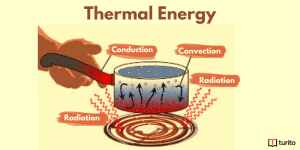The life cycle of a star
Imagine sitting on the rooftop of your house and looking at the sky. What are those twinkling things that appear? Those are the uncountable amount of stars. They might seem so small, but they are pretty huge in general.
Stars can appear in the form of huge celestial bodies made of helium, hydrogen and other such elements. They can generate heat and light from the violent movement of nuclear forces inside their cores.
Ever wondered how these stars are born? If yes, continue reading this article; you will find exactly what you are looking for. Let us discuss the life cycle of a star in detail in upcoming passages.
Life Cycle of a Star
There are millions of stars present in outer space. Each star has its own mass, and not every star looks similar in shape and size. They are all unique and possess different characteristics and attributes. The mass of a star is the determining factor for understanding how radiantly it can shine and how it dies.
The life cycle of a star starts with birth, expansion due to change and growth, and eventually death. Compared to the life cycle of living organisms, the timespan of stars is completely different. Also, each star has its lifespan, depending on various factors. Stars are capable of lasting up to billions of years.
Let us see the life cycle of a star diagram below:

The life cycle of a star diagram
The following passages will provide you with an idea regarding the different stages of the star’s life cycle.
Major Stages of a Star
As said earlier, each star has its own mass, and depending on its mass and other related factors, the life cycle of a star can be determined. For instance, massive stars are capable of transforming into a supernova, black holes and neutron stars.
On the other hand, average-sized stars, especially the sun, will end their lives as white dwarfs. This white dwarf gets surrounded by a disappearing planetary nebula.
Moreover, irrespective of the size, all the stars in the solar system follow the same 7-stage cycle. They typically begin as a gas cloud and end as a star remnant.
-
Molecular Cloud
The Giant Gas Cloud is the first stage stars go through to become stars. They originate from huge gas clouds. For synthesising the molecules, the temperature present in the cloud should be low enough.
In addition, this cloud is also called a molecular cloud. If the star formation occurs within the cloud, it might be referred to as a stellar nursery. This giant molecular cloud can be seen in the form of an interstellar cloud.
Moreover, its density and size allow the formation of molecules, absorption of nebulae and the formation of ionised atomic hydrogen. However, in other areas of the interstellar medium, they will consist of ionised gas.
The detection of molecular hydrogen by infrared and radio observations is difficult. To avoid that, we use CO (carbon monoxide), where we illustrate the H2 presence. The inside of the molecular clouds will be of higher density, and consist of gas cores and dust called clumps.
Furthermore, these clumps are regarded as the beginning of the formation of a star. However, for that to happen, the gravitational forces should be sufficient enough to make the gas and dust collapse.
-
Protostar
Heat energy is created when the gas particles in the giant molecular cloud interact with each other. As a result, there will be a formation of a clump of molecules that is warm in nature. This molecular clump is known as the protostar.
A protostar can gather mass from its parents’ molecular cloud. It is seen as a very young star. The protostellar phase is considered the earliest in the stellar evolution process. For a star whose mass is lower than or equal to the sun, it can last up to 500 thousand years.
We can see the protostars’ creation through infrared vision. It is because protostars are warmer in the molecular cloud compared to other materials. There will be multiple protostars formed based on the gas cloud’s size.
-
T-Tauri Phase
After the particles and materials stop falling into the previous phase, the protostar stage, the next stage begins. This stage is referred to as the T-Tauri phase. Here, an enormous amount of energy is released. The mean temperature contained in the Tauri star is not enough to support the nuclear fusion at its core.
In addition, the T-Tauri stars denote an intermediate stage between the low-mass main-sequence such as the sun and the real protostars. A typical T-Tauri star can last for more than 100 million years. Furthermore, the nearest T-Tauri stars to the earth’s surface are contained in -Ophiuchus and Taurus molecular clouds. They are about 400 light-years away from the earth.
This star enters the most elaborated development phase, the main sequence phase.
-
Main Sequence
The main sequence is an astronomical term referring to a condition with a distinctive and continuous pair of stars. They all appear on stellar colour stars versus brightness. The name of these colour-magnitude plots is Hertzsprung-Russell diagrams.
The main sequence is the phase where the developmental activities take place. In this phase, the core temperature will reach the point for the commencement of fusion. The protons in the hydrogen will be converted into helium atoms in this process. The reaction in this process is exothermic so it will give off heat more than the actual requirement.
Therefore, the main sequence star’s core is capable of releasing a humongous amount of energy.
-
Red Giant
The sole purpose of this red giant star is to convert atoms of hydrogen into atoms of helium. Therefore, the hydrogen fuel has the tendency to run out, which will cause the stoppage of the internal reaction.
If the reaction does not occur at the core, a star will be contracted inwards through gravity which will cause it to expand. The expansion makes the star become a subgiant star, followed by a red giant one.
The red giant stars possess cooler surfaces compared to that of the main sequence star. Due to this reason, they appear more red than yellow. Therefore, one can say that the red giant is a dying star that is currently in the last few stages of stellar evolution.
Scientific proof suggests that the sun will become a red giant, expanding and engulfing the inner parts in approximately 5 billion years.
-
Fusion between Heavier Elements
As the star keeps expanding, helium molecules can fuse at the core. The energy provided by the reaction will prevent the core from collapsing. As a result, there will be shrinkage of the core. It starts fusing carbon as soon as the fusion of helium is completed.
This process will continue until iron shows up at the core. During this process, there will be the absorption of energy by an iron fusion reaction. It could cause the core to collapse.
Therefore, this massive impulsive reaction transforms big stars into supernovas. On the other hand, the smaller stars, such as the sun, could be contracted into white dwarfs.
-
Supernova and Planetary Nebulae
After the fusion reaction, most of the materials of the star may be blasted away and segregated into space. However, the core will implode into a singularity or a neutron star, referred to as the black hole. Smaller stars do not explode; rather, their cores will contract, becoming hot stars called white dwarfs. The outer materials drifted away during this reaction.
In addition, there is not enough mass that can help other stars that are smaller than the sun to burn with anything. Therefore, one could see the occurrence of a red glow during their primary sequence. It is very difficult to spot these red dwarves; however, they are considered the most popular stars that burn for billions or trillions of years.
Conclusion
Hence, that is how a star was born, lived and destroyed. All these stages are predominantly fundamental for a star to exist and die. Therefore, these stages are considered the life cycle of a star. It does not matter whether they are small or big; they always coexist in the solar system and are capable of going through the same processes and stages.
Note:- When you look at the sky the next time, you can realise how unrealistic yet magnificent the life cycle of a star and our solar system are, containing such massive objects just floating around on top of our heads.
Frequently Asked Questions
1. Do stars die? And what are the stages of the star’s life cycle?
Yes, stars do die after a certain period. Its expiration varies depending on each star. Furthermore, the following are the various stages of a star’s lifespan:
- Molecular cloud
- Protostar
- T-Tauri phase
- Main sequence
- Red giant phase
- Fusion among heavier elements and substances
- Supernova and planetary nebulae
2. How many stars are there in the solar system?
Logically and technically speaking, it is impossible to count the number of stars in the sky. Therefore, they can be millions or billions. So, one could say that there are an infinite number of stars in the solar system.
3. Is the sun a star?
Yes, the sun is a very big star that could be visible to our eyes. However, the solar system has bigger and heavier stars than the sun.
4. What is solar mass?
The sun’s mass is known as a solar mass. Or, to be more precise, it weights 1.989 x 1030 kg – about 333,000 Earths.

Relevant Articles
Understanding Thermal Energy: What It Is and How It Works
Thermal energy is essential to our daily lives, from warming …
Understanding Thermal Energy: What It Is and How It Works Read More »
Read More >>Avogadro’s Number: Meaning, Importance, and More
Introduction The concept of measuring the microscopic particles that make …
Avogadro’s Number: Meaning, Importance, and More Read More »
Read More >>Kinetic Friction – Definition, Laws, Types
Kinetic Friction Kinetic force is a force acting between two …
Kinetic Friction – Definition, Laws, Types Read More »
Read More >>




















Comments: